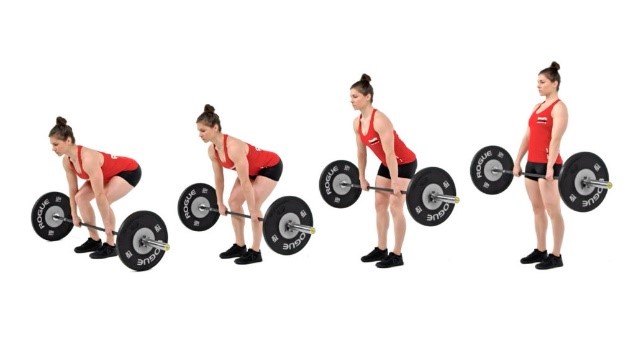So, You Want to Learn About Deadlifting?
by Acacia Rightmyer, DPT
AzOPT Prescott Staff Physical Therapist
Deadlifting – I am sure you have heard of it, maybe even seen others perform it, but did you know at some point in your life you most certainly have done it yourself? Even if you weren’t pulling weight in the gym, you have performed this exercise. When you lift a heavy Amazon package from your front door, pick up your child, or even rearrange furniture in your home; you have deadlifted!
What is deadlifting?
 Deadlifting is an exercise that is most commonly performed by athletes and recreational lifters. This exercise begins with grasping a barbell from a squat position. The motion continues as the lifter extends or straightens the knees and hips while maintaining close proximity of the bar to the body. These motions are then repeated back down to the squat position while also maintaining a neutral spine.
Deadlifting is an exercise that is most commonly performed by athletes and recreational lifters. This exercise begins with grasping a barbell from a squat position. The motion continues as the lifter extends or straightens the knees and hips while maintaining close proximity of the bar to the body. These motions are then repeated back down to the squat position while also maintaining a neutral spine.
What’s so great about deadlifting?
For starters, it works to strengthen several muscle groups making it an excellent option for a variety of conditions from a rehab standpoint. These muscle groups include core muscles in your back (erector spinae), the glutes (gluteus maximus and gluteus medius), and the hamstrings. Whether you are seeking help from physical therapy for pain or dysfunction in your low back, hips, or knees, there is a good chance deadlifting is an ideal option for your rehab.
Wait, so there are different ways to deadlift?
Absolutely! Like any exercise there are many variations to achieve different goals. For example, some of the common variations you may hear are Romanian deadlift, sumo deadlift, single-leg deadlift, or standard deadlift. Each of these variations can be used to target different muscles group more specifically. A recent study investigated muscle activation between a single-leg deadlift and a standard deadlift. These researchers found that during a single-leg deadlift the participants had significantly higher hip abductor and hamstring activity than in a standard deadlift and that the standard deadlift elicited stronger activation of the low back muscles (1).
There are years of research and too many studies performed to count to support the benefits of deadlifting. So, if your physical therapist has you deadlifting you know that there is strong evidence to back their reasoning for prescribing it!
But I have a lot of pain.
Will deadlifting make my pain worse?
In most instances, this exercise can do quite the opposite! With the proper guidance on form and technique from your physical therapist, deadlifting can work to significantly reduce your pain and increase your strength. It is no secret in the physical therapy world that movement is medicine and deadlifting is just another tool to increase your functional ability with everyday activities.
I could talk hours about muscle activation, variations of form, bilateral or unilateral, stable vs unstable surfaces with deadlifting etc., but at the end of the day what is important is that this exercise should not be feared. Whether you are a young athlete recovering from a knee injury, a 70-year-old who is struggling with back pain, or the 40-year-old recreational runner, deadlifting is a versatile exercise that, once learned, is an excellent option for continued strength and stability throughout your lifespan.
Keep on moving and keep on lifting so that you can Feel Better, Function Better, and Live Better!
1. Diamant W, Geisler S, Havers T, Knicker A. Comparison of EMG Activity between Single-Leg Deadlift and Conventional Bilateral Deadlift in Trained Amateur Athletes – An Empirical Analysis. Int J Exerc Sci. 2021;14(1):187. /pmc/articles/PMC8136577/. Accessed November 9, 2021.







